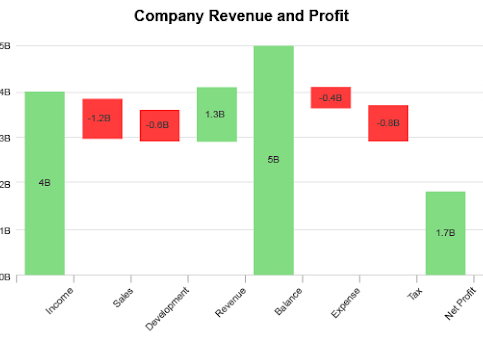As a business owner, you must take time and evaluate the milestones your marketing campaigns have achieved. Sometimes, you may realize that you are spending your money on campaigns that do not yield any fruits at the moment of the investment. During the business analysis, you will find it easier to acquire insights that will help you determine the way forward and enhance your business development.
The insights extracted from the company operations can help you gain a better picture of what your business involves and the areas that require improvement to enhance performance. It allows you to understand your ROI better and how you can measure it. Given that every business wants a better ROI, 60% of customers strongly believe that companies must offer information consistently across all online platforms.
Since the return on investment is the fundamental element considered by every business owner, there are different ways you can measure it. One of the best ways to measure your return on investment is by using the waterfall approach. This guide offers detailed information about how the whole process is done. Let’s get started!
What is ROI in Marketing
The return on investment, also known as ROI, is the aspect of attributing the profit and revenue growth to the impact of all the other marketing techniques applied by the business. By calculating the marketing ROI, it becomes easier for the business stakeholders to measure the degree to which the marketing efforts contribute to the revenue growth within the business.
Visualization Source: ChartExpo
In most cases, the marketing ROI is used to justify the marketing spend and the allocation of resources across the business to enable you to enhance the business development. When it comes to measuring your return on investment, there are lots of things that are involved in the process of detecting your exact return on investment as shown in the above waterfall chart.
The waterfall approach in marketing is one of the most common methodologies used to facilitate this process. The big question is, what does the waterfall approach involve? Let’s learn more in our next discussion!
What is Waterfall Marketing?
Given that the business industry involves a lot of processes, waterfall marketing is one of the top approaches used within the industry. Waterfall marketing is a unique strategy that mainly deals with inbound and in-depth market research to help establish a unique process for digital marketing operations. When you see that there is one causing the other in business, it’s definitely the impact of the waterfall effect.
When you apply the same strategy in digital marketing, you should consider starting with the first level of digital marketing to enable you to acquire more knowledge before getting to the next step. In this scenario, the flow of logic starts at the beginning of the process and ends at the bottom once you have reached several key points.
How Companies Use the Marketing ROI
Calculating the marketing ROI guides the company when making business decisions that are dedicated to optimize the marketing efforts put in place. Marketers use the return on investment to understand better how they can transform their game for better returns. Below are some of the significant ways in which companies use marketing ROI.
Distribute the Marketing Budget
Considering the offline and online models of business marketing, there is a mix of combinations that is in place to achieve things. However, every marketing activity requires funding in order to run smoothly. This is why you need to gain a better understanding of the online and offline methods that are generating a bigger percentage of business revenue.
Once you have established the best channels working for the business, you can narrow down and understand how to distribute your funding.
Competitive Analysis
When you track the return on investment of your competitors, you will be able to understand how your competitors are performing. This also gives you a better idea of how to compete with your top competitors and record excellent results. It’s essential to learn more about the ups and downs of your market to make your work easier and stand out in your industry.
Justify the Marketing Spend
Business stakeholders always make the process of allocating resources and the marketing budget a top priority for the smooth running of the business. When it comes to securing the future of marketing spend, it’s vital to justify all the vital elements at the executive level. This can only be done when the return on investment is well calculated to ensure that the marketing efforts are yielding results.
This process is done to evaluate whether different types of ads are generating the required results. At the end of the process, the budgets are then allocated based on the return on investment.
How to Measure the Marketing ROI Using the Waterfall Approach
The waterfall approach involves a series of steps that you need to follow in order to measure sure marketing ROI. Below are the steps to follow when measuring the marketing return on investment using the waterfall approach.
Conception
Conception is the first step when using the waterfall method. At this point, the product and method of advertisement are identified to help in gaining a better understanding of what needs to be tracked. This involves collecting background information about the business and the product offered.
Initiation and Information Gathering
This stage involves collecting background information about what it wants to deliver to consumers. At this point, the company is always more informed about the effort required to keep things moving. Once this stage seems more clear and creates a better path for your business, you can now move to the next stage.
Analysis
This stage involves an introspective time whereby your company can review all the upcoming projects from specific angles. At this point, all the company projects are subjected to specific tactics and methods to evaluate their performance.
Design
The design is the fourth phase that brings all the ideas into shape. Note that the insights collected from the analysis phase are brought to this point to help contribute to the final shape of your marketing efforts and the products you are offering. Note that not everything that will be included in the design stage will reach the final stage. It’s all about evaluating what can work for you.
Construction
This stage is mainly focused on making things happen. The construction stage comes after you have analyzed the idea in mind, and now you want to convert it into reality. Depending on the nature of the product that you intend to offer, this stage may involve physical construction.
Testing
Before you launch anything in business, you need to test and evaluate whether it can work or not. Testing will help you to identify any flaws in the products. When you identify such aspects in your products, you need to get back to the initial step and fix these errors to ensure that the products are accurate. Remember that consumers always expect accurate stuff to continue purchasing products from your business.
Once you get to this point, you will be capable of analyzing your products and the marketing ROI they generate. This will give you better insights that you can use in making development decisions going forward. Also, it helps in pointing out the areas that need changes to streamline all the necessary operations within your business.
Bottom Line
The marketing return on investment is a significant aspect that contributes to the flourishing of businesses across industries. Regardless of the marketing methods you ate using, it’s vital to ensure that you have a fantastic grasp of your marketing ROI. This aspect is calculated using different approaches, provided that you get the final value.
The waterfall approach is one of the best methods that business owners can put into practice. Apart from measuring the marketing ROI, it also helps during the product development process to ensure that the products you develop are within the required standards.


